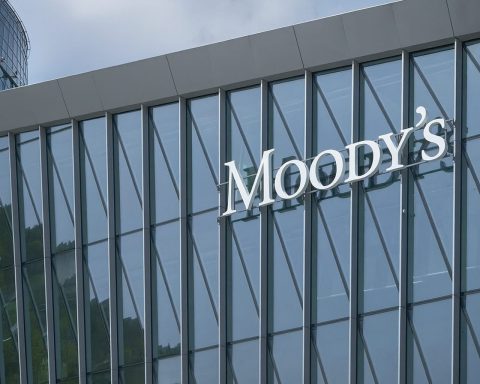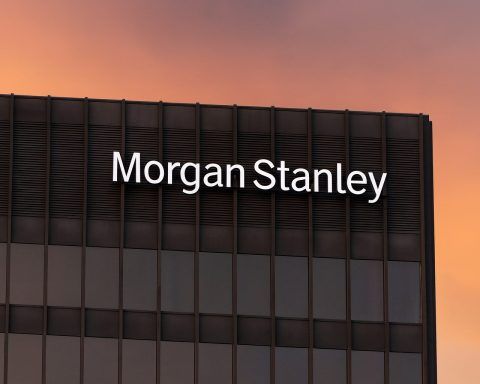Commonwealth Bank of Australia (ASX: CBA) heads into Friday 21 November 2025 still under pressure after one of its sharpest sell‑offs in years, as investors juggle three big storylines: stretched valuations, political scrutiny over “excessive” fees, and growing concern about Australia’s overheated housing market.
At Thursday’s close, CBA shares were trading around A$153, up slightly on the day but still roughly 16–20% below their June record high of A$192. [1] That leaves Australia’s biggest bank in an unusual position: still priced at a premium to rivals, but suddenly on the defensive.
Key takeaways for 21 November 2025
- Share price: Around A$153 per share after Thursday’s close, down sharply from June’s A$192 peak and roughly 14% lower over the past 10 trading days. [2]
- Valuation debate intensifies: Analysts at Bell Potter and other brokers argue CBA’s share price remains “disconnected from fundamentals” despite the pullback. [3]
- Margins under pressure: The November quarterly update showed cash profit rising to A$2.6 billion, but net interest margins and costs disappointed, triggering a near‑5% share price fall on the day. [4]
- Political scrutiny: CBA is under fire over roughly A$270 million in “excessive fees” charged to about 2.2 million low‑income customers, and its reluctance to issue broad refunds. [5]
- Housing concerns: CEO Matt Comyn has warned that home‑loan demand is “too high” and risks pushing property prices further out of reach, even as CBA leads the market in mortgage growth. [6]
CBA share price today: stabilising after a brutal November
Fresh price data from market sites shows CBA changing hands in the low A$150s, with one widely used real‑time feed putting Thursday’s close at A$153.00, up 1.1% on the session but down more than 14% over the past 10 days. [7]
Another Australian share‑market service estimates CBA’s financial‑year‑to‑date performance at about –17%, even though the bank is roughly flat year‑to‑date on a calendar basis. [8] That combination – a long, smooth rally followed by a sharp correction – is exactly what many strategists had been warning about for months.
The share price is still elevated relative to history and peers. MarketIndex’s latest valuation snapshot shows CBA’s forward price‑to‑earnings (P/E) ratio falling from 23.9 to 22.8 in just a week as the stock sold off – but that still leaves it trading at a significant premium to other major banks such as ANZ and Macquarie. [9]
In short, CBA remains one of the most expensive bank stocks in the world, just a little less expensive than it was a fortnight ago.
What triggered the November sell‑off?
A solid profit, but softer margins
The current downturn began with CBA’s first‑quarter trading update on 10–11 November. The bank reported cash profit of A$2.6 billion for July–September, around 2% higher than a year earlier and slightly above the average of recent quarters. [10]
On the surface, that looked respectable. But the market homed in on two weaker spots:
- Net interest margin (NIM) – the spread between what CBA earns on loans and pays on deposits – fell as cheap pandemic‑era funding rolled off and customers chased higher deposit rates elsewhere.
- Operating costs jumped about 4%, reflecting wage inflation and fast‑rising technology spend. [11]
Reuters reported that CBA’s shares dropped nearly 5% on the day of the update, even as rival banks traded higher, with analysts describing the stock as “expensive on any metric” and pointing to investor rotation into cheaper peers. [12]
Brokers call out a “priced for perfection” premium
An in‑depth broker roundup from FNArena put numbers around the unease. Even after the initial sell‑off, the average 12‑month target price across six major brokers sat around A$118, more than 25% below CBA’s then market price near A$158. [13]
Key points from that analysis:
- CBA still boasts sector‑leading return on equity, technology capability and deposit base, and dominates Australia’s residential mortgage market.
- Yet every broker in the sample had a Sell‑equivalent recommendation, mainly because valuation multiples remain extreme.
- Ord Minnett went as far as describing CBA as “the most expensive bank ever in developed markets”, with a forward P/E still around the mid‑20s even after the drop. [14]
That set the stage for the deeper slump that followed as broader market sentiment turned, tech stocks wobbled globally, and investors finally questioned how long CBA’s premium could last.
Fresh headlines on 21 November 2025
1. Bell Potter flags valuation “disconnected from fundamentals”
The newest headline specific to CBA on 21 November comes from a fresh analysis syndicated by The Motley Fool Australia. Drawing on research from Bell Potter, it argues that CBA’s share price remains “disconnected from fundamentals”, even after a double‑digit percentage decline from its peak. [15]
While full details of the note are behind paywalls, the key messages are consistent with other recent broker research:
- Earnings growth is modest rather than spectacular, especially given competitive pressure on margins.
- Cost growth – particularly in technology and regulatory compliance – is running faster than many long‑term models assumed. [16]
- At current prices in the low A$150s, the dividend yield remains relatively modest compared with global bank peers, even after the sell‑off.
Other Fool.com.au commentary earlier this month noted that the share price is down around 16–20% from June’s A$192 high, which has mechanically lifted CBA’s forward dividend yield and made the stock more interesting for income‑focused investors – but not enough, in many analysts’ view, to fully offset the valuation risk. [17]
2. CBA talks up regional Australia as agriculture hits a record
Also on 21 November, CBA’s newsroom highlighted a record A$101.6 billion forecast for Australia’s agriculture, fisheries and forestry production in 2025–26, drawing on new data from the federal agriculture department. [18]
The article emphasises:
- Strong winter‑crop production despite localised drought.
- Robust global demand for beef and canola, including Australia’s first canola shipment to China in five years. [19]
- CBA’s presence in the regions, with more than 700 agribusiness specialists across 70 centres supporting around 12,000 customers. [20]
While this story is more about brand and community positioning than immediate earnings, it underlines a strategic point for investors: CBA is leaning hard into its rural and agribusiness franchise as a diversification play beyond the capital‑city housing market.
3. Wall Street wobble keeps pressure on ASX financials
A separate CommBank‑branded market update published on 21 November notes that US equities closed lower overnight, led by weakness in technology stocks, with Wall Street still “skittish” around interest‑rate and growth expectations. [21]
For CBA shareholders, the takeaway is straightforward: a risk‑off mood globally tends to hit expensive, index‑heavy names hardest. As the largest company on the ASX by market capitalisation, CBA often amplifies the broader index’s moves, both up and down.
Regulatory and political pressure: the “excessive fees” storm
One of the most consequential stories hanging over CBA this week is not directly about its share price – it’s about trust.
On 18 November, The Guardian reported that the bank had charged around A$270 million in “excessive fees” to about 2.2 million low‑income customers over five years, citing a July investigation by the Australian Securities and Investments Commission (ASIC). [22]
Key elements from that piece:
- The fees related to account‑keeping, dishonour and overdraw charges on concession‑style accounts linked to Centrelink and other social‑security payments. [23]
- While rival banks such as Westpac have agreed to fully refund similar fees, CBA CEO Matt Comyn told a parliamentary committee that simply returning all the money could be viewed as an “appropriation” of shareholder funds. [24]
- Consumer advocacy group Choice argued that the money “should never have been taken out” of vulnerable customers’ accounts in the first place and urged the bank to stop “making excuses” and issue refunds. [25]
The optics are uncomfortable: a bank that recently reported a record A$10.25 billion full‑year cash profit is defending its right to keep hundreds of millions of dollars in fees charged to some of its lowest‑income customers. [26]
Politically, that adds to pressure already building over bank profits, housing affordability and financial‑sector conduct. From an investor’s perspective, it raises the risk of:
- Reputational damage, especially at a time when ESG screens are becoming more influential.
- Potential regulatory intervention or forced remediation down the track, which could impact earnings or capital.
Housing market jitters: “Home loan demand is too high”
CBA dominates the Australian mortgage market, writing about a quarter of all home loans. [27] That dominance is usually seen as a strength – but it’s now feeding into a bigger policy debate.
In testimony to lawmakers this week, Matt Comyn warned that demand for home loans is “too high” and helping to push property prices up. [28]
According to a Reuters summary of his evidence:
- New loan commitments for dwellings rose 6.4% quarter‑on‑quarter in Q3 2025, and overall housing credit growth is now above post‑GFC averages, driven by investors leveraging low rates. [29]
- CBA’s mortgage book grew 6% over the past financial year to about A$664.7 billion, outpacing some rivals. [30]
- The bank expects the RBA cash rate to remain around 3.6% through 2026, with inflation proving sticky and rate‑cut hopes fading. [31]
The message is nuanced: CBA benefits from strong credit growth, but management is signalling that the current pace may not be sustainable or socially acceptable. Combined with the fees controversy, it strengthens the narrative that political risk is now a real line‑item for shareholders to consider.
Bank reporting season: stronger dividends, but lofty valuations
Outside the CBA‑specific headlines, the broader banking backdrop remains surprisingly robust.
A November scorecard from Firstlinks, reviewing results across the major and regional banks, concluded that:
- Bad debts remain extremely low, with no major bank reporting loan losses above 0.15% of gross loans.
- All the big four increased dividends again this reporting season, helped by solid margins and strong capital positions. [32]
- Since the start of 2024, Australian bank stocks have delivered returns wildly ahead of the wider ASX 200, reinforcing their status as the backbone of many local portfolios. [33]
That success is a double‑edged sword for CBA. The bank was already trading on a premium multiple after posting a record A$10.25 billion annual profit and record A$4.85 per‑share dividend in its August full‑year results. [34]When markets turned and funding costs started to bite, there was far more air under the share price than under those of its peers.
MarketIndex’s latest sector drill‑down shows that falling share prices across the ASX 200 have dragged valuation multiples lower this week – but CBA still screens as one of the richest names in financials on price‑to‑earnings measures. [35]
Is CBA finally cheap enough? What analysts are watching now
With the stock back in the low A$150s, new commentary from both bullish and bearish camps is starting to converge around a few core themes.
1. Valuation vs. quality
Bulls argue that:
- CBA is still the premier Australian bank franchise, with best‑in‑class technology, customer engagement and deposit funding. [36]
- Its mortgage and business‑lending books remain high‑quality, with non‑performing loan ratios still low and capital ratios comfortably above regulatory minima. [37]
Bears counter that:
- Even after the fall, CBA’s forward P/E in the low‑ to mid‑20s and modest dividend yield leave limited margin of safety, particularly if earnings disappoint further. [38]
- Peers like ANZ, Westpac and NAB now offer similar or better earnings momentum and higher yields at much lower valuations, making it harder to justify CBA’s premium. [39]
2. Margin and cost trends
Both sides are watching:
- How quickly deposit competition continues to erode margins as customers shift from low‑yielding accounts into higher‑rate products. [40]
- Whether CBA can rein in technology and compliance costs, which brokers expect to grow at mid‑single‑digit rates for several years. [41]
If margins compress faster than expected, earnings downgrades could follow – and with them, a further de‑rating of the share price.
3. Political and social licence to operate
The combination of:
- Record profits,
- Reluctance to fully refund controversial fees, and
- A CEO publicly acknowledging that home‑loan demand is too strong for comfort
creates a sensitive political mix. [42] Investors will be watching closely for any signals of:
- Forced remediation programs or regulatory penalties,
- Changes to fee structures or concession‑accounts policy,
- Tighter macroprudential rules on investor lending or debt‑to‑income caps.
Any of these could affect CBA’s growth, pricing power or cost base over the next few years.
Bottom line: CBA in late 2025 is about risk tolerance, not brand loyalty
Heading into Friday 21 November, CBA remains:
- Australia’s largest listed company and dominant bank,
- A core holding in many index and dividend portfolios,
- But also a stock where valuation, politics and macro headwinds are finally catching up with the story.
For more conservative investors, the recent slump may still not be enough to justify the remaining premium to peers. For those willing to accept higher volatility in exchange for CBA’s scale and franchise strength, the low A$150s could mark the start of a more interesting entry zone – provided margins stabilise and political risk is contained.
Either way, the message from today’s news flow is clear: CBA is no longer a simple “buy and forget” market darling.It’s a high‑quality bank in a more complicated world, and 21 November 2025 will likely be remembered as part of the moment when that reality finally hit the share price.
This article is for informational purposes only and does not constitute financial advice. Always consider your own objectives and consult a licensed adviser before making investment decisions.
References
1. www.investing.com, 2. stockinvest.us, 3. www.fool.com.au, 4. www.reuters.com, 5. www.theguardian.com, 6. www.reuters.com, 7. stockinvest.us, 8. www.intelligentinvestor.com.au, 9. www.marketindex.com.au, 10. www.reuters.com, 11. www.reuters.com, 12. www.reuters.com, 13. fnarena.com, 14. fnarena.com, 15. www.fool.com.au, 16. fnarena.com, 17. www.fool.com.au, 18. www.commbank.com.au, 19. www.commbank.com.au, 20. www.commbank.com.au, 21. www.commbank.com.au, 22. www.theguardian.com, 23. www.theguardian.com, 24. www.theguardian.com, 25. www.theguardian.com, 26. www.reuters.com, 27. www.reuters.com, 28. www.reuters.com, 29. www.reuters.com, 30. www.reuters.com, 31. www.reuters.com, 32. www.firstlinks.com.au, 33. www.firstlinks.com.au, 34. www.reuters.com, 35. www.marketindex.com.au, 36. fnarena.com, 37. www.reuters.com, 38. fnarena.com, 39. fnarena.com, 40. fnarena.com, 41. fnarena.com, 42. www.theguardian.com










